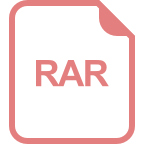C语言编程基础教程
下载需积分: 50 | PDF格式 | 1.66MB |
更新于2024-07-24
| 106 浏览量 | 举报
"这是一本关于C语言编程的初级入门教程,主要面向英语读者。书中由浅入深地介绍了C语言的基本概念和编程技巧,包括变量、表达式、控制流、函数等核心概念,适合初学者学习使用。"
在《C程序学习》这本书中,作者以易于理解的方式引导读者进入C语言的世界。首先,书中的“Preface”部分可能对作者的编写意图和书籍适用人群进行了简要介绍,为后续的学习奠定了基础。
第一章“一个教程式的介绍”是入门阶段的关键,它涵盖了以下几个方面:
1.1 “Getting Started”引导读者如何开始编写C程序,包括环境设置和基本的编程流程。
1.2 阐述了“变量和算术表达式”,这是理解任何编程语言的基础,讲解了变量的声明、赋值以及基本的算术运算。
1.3 “The for statement”介绍了C语言中常用的循环结构for循环,它是程序控制流程中的重要工具。
1.4 “Symbolic Constants”解释了符号常量的使用,它们在程序中提供了一种定义不可变值的方式。
1.5 “Character Input and Output”这部分涉及字符输入和输出,包括简单的文件复制、字符计数、行计数和单词计数的示例,这些都是基本的I/O操作。
1.6 “Arrays”介绍了数组的概念,如何声明和操作数组。
1.7 “Functions”讲解了函数的定义和调用,以及函数在代码组织中的作用。
1.8 “Arguments - Call by Value”讨论了函数参数传递机制,即按值传递。
1.9 “Character Arrays”进一步深入到字符数组,也就是字符串的处理。
1.10 “External Variables and Scope”提到了外部变量和作用域的概念,这对于理解变量在程序中的可见性和生命周期至关重要。
第二章“类型、运算符和表达式”深入到C语言的语法细节:
2.1 “Variable Names”讨论了变量命名规则和约定。
2.2 “Data Types and Sizes”介绍了C语言的数据类型及其存储大小。
2.3 “Constants”涵盖了常量的使用,包括整型、浮点型和字符型常量。
2.4 “Declarations”讲解了变量和数据类型的声明。
2.5 “Arithmetic Operators”列出了算术运算符,如加减乘除和取模。
2.6 “Relational and Logical Operators”介绍了关系和逻辑运算符,用于比较和逻辑判断。
2.7 “Type Conversions”讨论了类型转换,当不同数据类型之间进行运算时会发生的情况。
2.8 “Increment and Decrement Operators”解释了自增和自减运算符的用法。
2.9 “Bitwise Operators”涵盖了位操作符,适用于底层的位级操作。
2.10 “Assignment Operators and Expressions”讨论了赋值运算符及其在表达式中的应用。
2.11 “Conditional Expressions”介绍了条件表达式,如三元运算符。
2.12 “Precedence and Order of Evaluation”讲解了运算符的优先级和求值顺序,这对于正确理解表达式至关重要。
第三章“控制流”关注程序的执行路径:
3.1 “Statements and Blocks”解释了语句和代码块的概念,如何组织代码。
3.2 “If-Else”介绍了条件语句if和else,用于执行基于条件的代码分支。
3.3 “Else-If”讲述了else-if的使用,增加了条件判断的灵活性。
3.4 “Switch”讲解了switch语句,提供了多分支选择的另一种方式。
3.5 “Loops - While and For”介绍了while和for循环,用于重复执行某段代码。
3.6 “Loops - Do-While”提到了do-while循环,其特点是先执行后判断。
3.7 “Break and Continue”讨论了在循环中跳出和跳过当前迭代的语句。
3.8 “Goto and labels”虽然在结构化编程中不推荐,但仍然介绍了goto语句及其在跳转控制中的使用。
第四章“Functions”和后续章节可能会继续深入探讨更高级的主题,如指针、内存管理、结构体、文件操作等,这些是C语言的重要组成部分,也是进阶学习的关键。
《C程序学习》是一本全面覆盖C语言基础知识的教材,通过实例和清晰的解释,帮助初学者逐步掌握编程技能。
相关推荐





103 浏览量

231 浏览量

157 浏览量

CherishDevil
- 粉丝: 0
最新资源
- Unix/Linux命令整理:文件操作与路径管理
- ASP.NET(C#)实现点击刷新验证码功能
- EJB3.0实战教程:从基础到进阶
- C++实现简单MergeSort排序算法详解
- Lotus Notes邮件系统互联网配置详解
- 精通JavaScript:Web开发者必读
- 宛枫书社图书管理系统:设计与实现详解
- SED1335液晶控制器:解决‘雪花’现象与技术解析
- C++/C编程规范与最佳实践
- Cormen算法入门习题解答:优化插入排序与合并排序
- 微软企业信息门户解决方案:提升效率与协作
- MySQL 5.0存储过程详解:新特性和实战应用
- MATLAB常用函数详解与操作指南
- Tomcat配置详解:虚拟目录、端口设置与错误页面配置
- Linux网络配置与策略路由:ip命令详解
- 面向对象设计C#版:伍迷的编程智慧
 已收录资源合集
已收录资源合集














